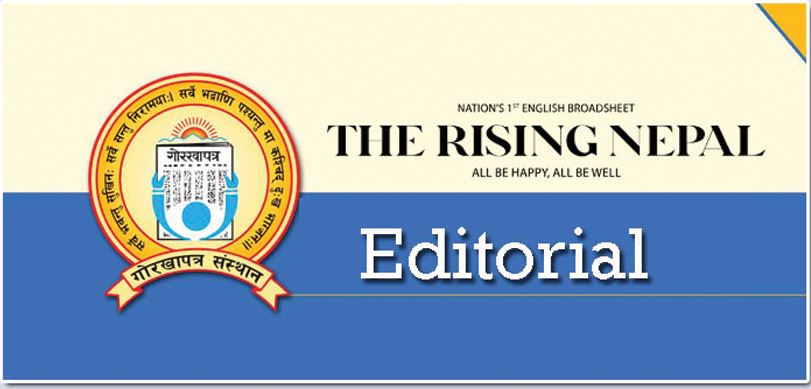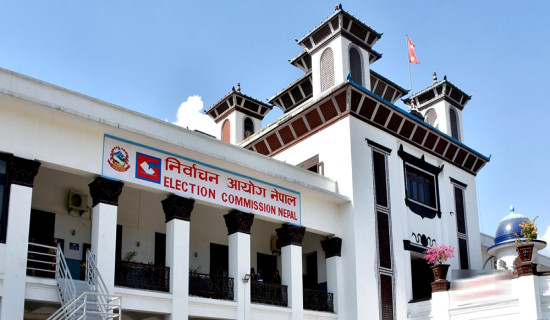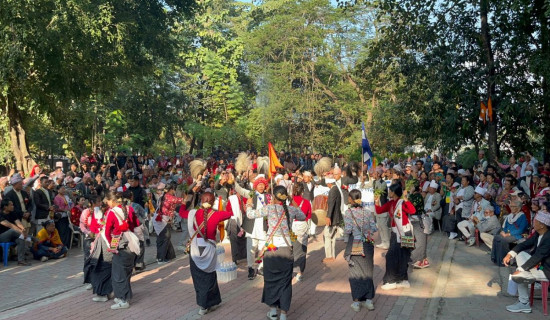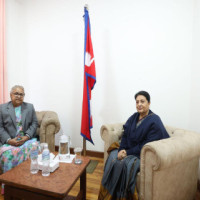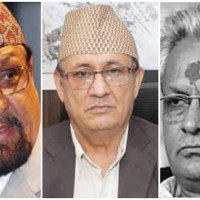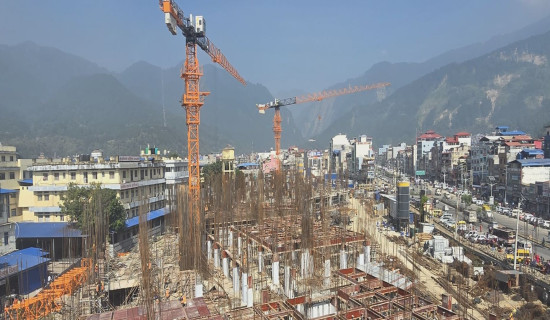- Monday, 8 December 2025
Monsoon Havoc
Heavy rainfall since Friday evening has brought normal life to a grinding halt across the nation. At least 40 people have lost their lives in floods and landslides triggered by the incessant rainfall. Over 38 people were killed in landslides in Ilam district alone on Saturday night. Scores of others were injured and a few went missing in the monsoon catastrophe. This loss of lives occurred, mostly in Ilam, despite the government's proactive measures to avert the possible human tragedy in the natural disasters. Landslides also blocked all major highways, prompting authorities to impose a ban on vehicular movements along them for three consecutive days, beginning from Saturday to Monday. The government has announced a public holiday for Sunday and Monday to reduce traffic movements along the damaged roads and highways. This time, the early warning system looked effective in averting disasters in the Kathmandu Valley and nearby districts. The people were constantly informed about weather conditions and flood-prone rivers and riverbanks, ensuring their safety. This step also helped reduce possible casualties.
All state apparatuses are now mobilised for rescue and clearance operations. Given the magnitude of damage to the key highways, it will take several days to bring them into full operation. The heavy downpours lashed the nation when the people were busy celebrating Dashain, the biggest festival of Nepalis. Many of those who were away from their homes to celebrate the festival will be unable to return to their workplaces. Many of them have been stranded on the way to their destinations. The transport of goods and emergency services has also been affected.
The Department of Hydrology and Meteorology has attributed the extreme rainfall to a low-pressure weather system developed in the Bay of Bengal. It brought the moisture-laden monsoon winds to Nepal's Tarai via the Indian state of Odisha. Koshi, Madhes, Bagmati, Gandaki and Lumbini provinces witnessed the heavy rainfall, which, according to meteorologists, will continue till Monday in various areas. On Saturday, the Department categorised districts into “very high risk” and “risk-prone” groups and urged the general public to maintain caution. Although the skies of Kathmandu were clear on Sunday morning, the central and eastern regions experienced cloud cover, while other places had predominantly or partly cloudy skies.
Floods and landslides have severely damaged 12 portions of the BP Highway that links the capital city with central Tarai. Some parts were swept away by the floods and landslides, while others have suffered subsidence. Several sections of the BP Highway were washed away by the floods and landslides in September last year. But the previous government failed to repair and construct the damaged parts, causing inconvenience to the commuters.
Learning from last year's calamities, the interim government, this year, strengthened the information system, disseminating consistent information from the centre to the local level. The citizens were urged to remain safe through loudspeakers in 63 districts. Prime Minister Sushila Karki tried to directly communicate with the people, asking them not to hesitate to get help from the government. The local administration, as well as the local governments, were active in rescuing and supporting the stranded people. The prolonged monsoon rains have also tested the country’s fragile topography. The landslides happening throughout the country show that they are part of a common pattern, not isolated incidents. This requires adopting a coherent strategy while building climate-resilient roads, highways, bridges, riverbank structures and houses.

